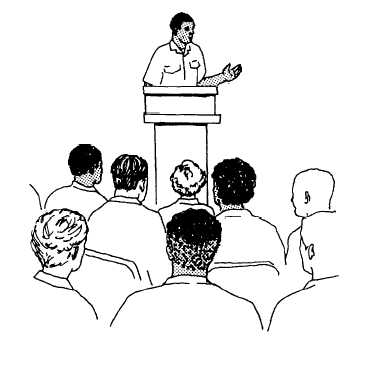| |
CHAPTER 6
INSTRUCTIONAL METHODS
INTRODUCTION
The definition of instructional methods is “an educational approach for turning knowledge
into learning.” Instructional methods are the “how to” in the delivery of training. You have all
heard the old saying that there is more than one way to skin a cat. Likewise, there is more than
one method to use in training your students. The methods used in any learning situation are
primarily dictated by the learning objectives decided upon by the course developers. In many
cases a combination of methods are used to intensify the learning experiences. As an instructor,
you need to understand the following methods and your responsibilities in using them: lecture,
lecture with audiovisuals, lesson, demonstration, role-playing, case study, and discussion. The
lesson method and the demonstration method are the two most commonly used in Navy
training. However, for purposes of this chapter the methods are discussed as sequenced above.
LECTURE
The lecture
m e t h o d i s an
i n s t r u c t i o n a l p r e s e n t a t i o n of
information, concepts, or principles.
Its main purpose is to present a
large amount of information in a
short period of time.
The lecture method is an efficient
way to introduce a new topic of
s t u d y or
present background
material students need for future
classes. A lecture allows instructors
to present a subject to a large
audience because they use no visuals
and there is no interaction between
the students and the instructor. In
fact, with the use of closed-circuit
television, audience size is essentially
unlimited.
A l e c t u r e m a y be
presented to thousands of persons at
a time through the use of the closed
52
|

